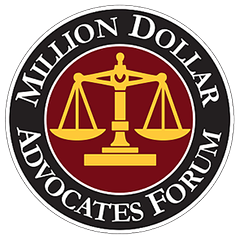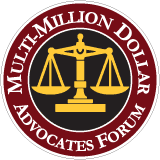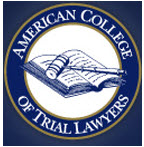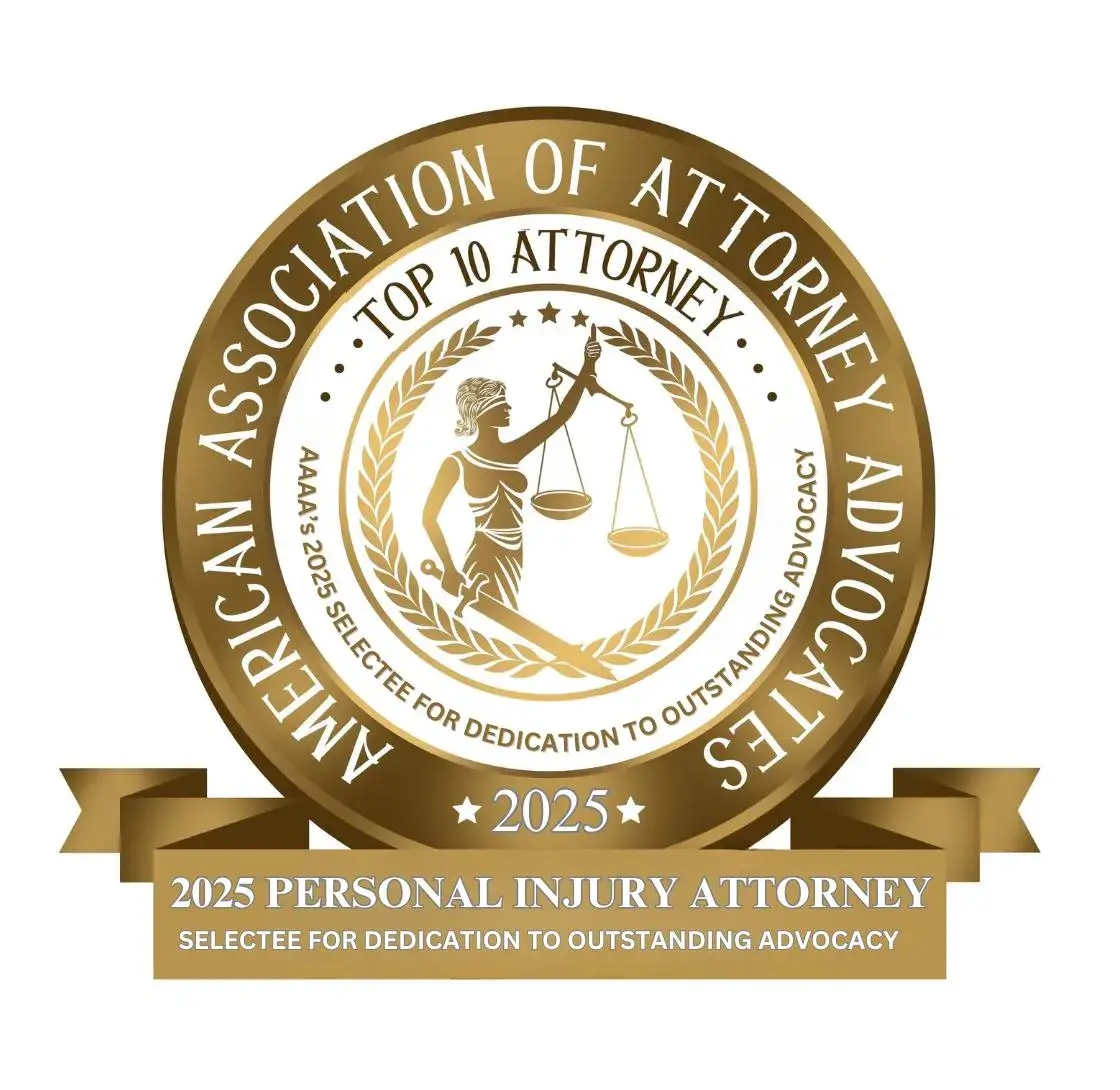What Is Considered Reckless Driving?
Reckless driving is a serious issue that goes beyond simple mistakes. It is behavior that shows a willful disregard for the safety of others on the road. Essentially, it’s not just careless; it’s dangerous. Whether you were struck by someone speeding through an intersection, tailgating, or weaving through lanes with little regard for anyone else, you’ve already experienced firsthand the harm that reckless driving can cause. But what exactly constitutes reckless driving?
What is considered reckless driving?
Reckless driving goes beyond simple mistakes—it’s behavior that shows a clear disregard for the safety of others. Here’s what qualifies:
- Excessive speeding, especially in areas with heavy traffic or near schools
- Tailgating and aggressive driving that leaves no room for safe reaction
- Running red lights or stop signs, risking dangerous intersection collisions
- Weaving through traffic or lane-switching unpredictably
- Driving under the influence of drugs or alcohol
- Distracted driving, like texting while speeding or in heavy traffic
Defining Reckless Driving
Reckless driving involves operating a vehicle in a way that demonstrates a blatant and harmful disregard for traffic laws or the safety of others. Unlike minor infractions, such as accidentally missing a turn signal, reckless driving shows intent or extreme carelessness. Behaviors typically classified as reckless include excessive speeding, street racing, aggressive tailgating, ignoring traffic lights or stop signs, driving under the influence of substances, and weaving in and out of traffic dangerously.
These actions can escalate to critical situations in moments. For victims, the outcomes range from “near-misses” that haunt their thoughts for weeks to devastating impacts that leave them with injuries requiring years of recovery. Regardless of the severity of the incident, reckless driving is preventable, which makes accidents stemming from it all the more unjust.
Common Forms of Reckless Driving
Reckless driving comes in many forms, making it a widespread risk on roads everywhere. To better understand reckless driving, here are some of the most frequent behaviors:
Speeding
Speed limits exist for a reason: to protect everyone on the road. Excessive speeding is one of the most common forms of reckless driving. At high speeds, drivers have less time to react to other cars, pedestrians, or unexpected obstacles. Collisions caused by speeding often result in severe injuries because the force of impact is significantly stronger than in accidents that occur at lower speeds.
Tailgating
Driving too closely to the car ahead, often out of impatience or aggression, is another dangerous behavior that falls under reckless driving. Tailgating leaves little to no room for error. If the car in front needs to stop suddenly, a rear-end collision is almost guaranteed. These accidents can seem minor at first glance, but can cause neck injuries like whiplash or worse.
Running Red Lights or Stop Signs
Ignoring traffic signals is a recklessly selfish decision that puts everyone at risk. Running a red light can lead to deadly T-bone collisions, especially in busy intersections. These crashes commonly result in catastrophic injuries for passengers sitting on the side of the impact.
Weaving Through Traffic
Drivers who zigzag through lanes at high speeds may think they’re just saving time, but these actions disregard the safety of everyone around them. This unpredictable behavior leaves fellow motorists with little time to anticipate or avoid collisions.
Driving Under the Influence
Driving while under the influence of alcohol or drugs is one of the most reckless actions imaginable. Impaired drivers have slower reaction times, diminished motor skills, and poor judgment. Unfortunately, their choices frequently lead to accidents with devastating consequences for innocent victims.
Distracted Driving
Distracted driving may not always be classified as reckless, depending on the situation. However, when distractions such as texting, eating, or adjusting the GPS are combined with high speeds or heavy traffic, the driver’s actions may cross into reckless behavior. Victims of distracted drivers often face life-changing injuries and may even lose loved ones due to another person’s negligence.
The Consequences of Reckless Driving
When someone engages in reckless driving, their choices ripple out, affecting far more lives than they might imagine. For accident victims, the consequences extend into physical, emotional, and financial hardships. Here’s a closer look at what victims often face:
Physical Injuries
Reckless driving accidents frequently result in severe or catastrophic injuries. These might include traumatic brain injuries, spinal cord damage, broken bones, severe burns, or internal injuries. Depending on the severity of the crash, recovery may take months, years, or the injuries may cause permanent disability.
For example, someone involved in a high-speed collision may need multiple surgeries and long-term physical therapy to regain mobility. Others might face chronic pain that makes it impossible to return to their normal lives.
Emotional and Psychological Trauma
The effects of reckless driving aren’t just physical. Many accident victims experience significant psychological stress after a collision, including post-traumatic stress disorder (PTSD), anxiety, or depression. Sleepless nights, flashbacks, and fear of driving are common realities that victims live with long after the accident is over.
Financial Burden
The costs of medical treatment, physical therapy, ongoing care, and lost income due to time away from work can add up quickly. Many reckless driving accident victims worry about how they’ll pay for these expenses on top of car repairs or replacement. This financial strain can be a lot to handle, especially when the crash was entirely preventable.
Loss of Life
Tragically, reckless driving often leads to fatalities, leaving families to grapple with the sudden and heartbreaking loss of a loved one. For those who survive but lose someone dear, the emotional toll is immeasurable. Parents, spouses, and children are left mourning lives cut short by someone else’s thoughtless actions.
The weight of these consequences will feel different for everyone who has been impacted by reckless driving. No matter what your experience is, it’s valid, and it’s important to acknowledge the profound impact these accidents have on your life.
Knowing Your Rights After a Reckless Driving Accident
One of the most confusing parts of recovering from a reckless driving accident is understanding your rights and protecting them. Reckless driving is not just a traffic violation; when it causes harm to others, it becomes a matter of negligence. The driver who acted recklessly can and should be held liable for the damages they caused.
Negligence is a breach of the duty to drive responsibly and safely. This duty exists to protect everyone on the road. When someone ignores it by speeding, tailgating, engaging in road rage, running red lights, or driving under the influence, they violate the trust of other drivers and put lives at risk. If their reckless behavior resulted in your injuries, then they bear responsibility for the harm you’ve endured.
Victims of reckless driving accidents are entitled to pursue compensation for:
- Medical expenses: This includes both current and future costs related to your injuries.
- Lost income: Compensation for wages lost while recovering and for loss of future earning potential.
- Pain and suffering: Non-economic damages reflecting the emotional and physical toll of the accident.
- Rehabilitation costs: Ongoing treatments such as physical therapy, counseling, or modifications to your home or vehicle.
The key to recovering these damages is showing that the reckless driver’s actions directly caused your injuries. Evidence like police reports, witness statements, and medical records plays a major role in proving liability and damages.
How Do You Prove Reckless Driving in a Personal Injury Case?
If you’ve been hurt in an accident caused by a reckless driver, holding them accountable is essential. But how do you prove that what happened was more than just an accident?
That’s where evidence becomes critical. In a personal injury claim, your legal team will work to show that the other driver acted with disregard for the safety of others. This is usually done by gathering and presenting key evidence such as:
- Police reports: Law enforcement may cite or arrest the driver for reckless driving at the scene. These citations are strong indicators of fault.
- Witness statements: People who saw the accident can often describe the reckless behavior that led to the crash.
- Traffic camera footage: Video evidence can clearly show if a driver ran a red light, was speeding, or made illegal maneuvers.
- Vehicle data: Some modern cars have event data recorders (EDRs) that capture information like speed and braking prior to a crash.
- Expert testimony: Accident reconstruction specialists can explain how the crash happened and why the driver’s actions were unsafe.
Reckless driving cases aren’t always straightforward. Insurance companies will often try to downplay the severity of the driver’s actions or even suggest that you were partially to blame. That’s why it’s crucial to have someone fighting for you; someone who understands what’s at stake and won’t let those responsible off the hook.
The Difference Between Reckless Driving and Negligence
It’s important to understand the difference between negligence and recklessness. Both can lead to serious accidents, but they involve different levels of fault.
- Negligence means someone failed to use reasonable care. Maybe they were distracted, made a mistake, or didn’t notice a hazard.
- Recklessness, on the other hand, means the person knew their behavior was dangerous and chose to do it anyway.
Think of it this way: negligence might be taking your eyes off the road to adjust the radio. Recklessness is speeding 90 mph through a red light in a school zone.
This difference can impact your personal injury claim. In some cases, reckless driving may lead to punitive damages, a type of financial compensation meant to punish especially dangerous behavior and deter others from doing the same.
Protecting Your Claim and Taking Action
If you’ve been injured in a reckless driving accident, taking certain steps can safeguard your rights and strengthen your personal injury claim. Your actions immediately after the crash and in the weeks following can make a significant difference in your ability to pursue fair compensation.
- Get Medical Attention Immediately
Your health and safety are the top priority. Even if you don’t think your injuries are serious, it’s essential to be examined by a doctor. Some injuries, like whiplash, internal bleeding, or concussions, may not be obvious right away.
Seeing a doctor also creates an official medical record of your injuries, which will be crucial in any personal injury claim.
- 2. Call the Police and Get a Report
If law enforcement wasn’t already on the scene, call them. Officers can investigate the crash and document important details. If the other driver was reckless, they may be cited or even arrested, another key piece of evidence in your case.
Be sure to ask how to obtain a copy of the police report once it’s completed.
- Document Everything You Can
If you’re physically able, take photos of the scene. Capture damage to all vehicles, debris in the road, traffic signals, skid marks, and any visible injuries. Write down what you remember as soon as possible. Over time, your memory of the event may fade.
Also, gather contact information for any witnesses who may have seen the reckless behavior firsthand.
- Don’t Talk to the Other Driver’s Insurance Company Alone
Insurance companies are not on your side. Their goal is to minimize payouts and protect their bottom line. A representative may contact you shortly after the crash, asking for a recorded statement or offering a quick settlement.
Do not agree to anything or sign any documents before speaking with an experienced personal injury lawyer. Once you accept a settlement, you may be unable to seek additional compensation later, even if your injuries worsen.
- Speak with a Personal Injury Lawyer
Reckless driving accidents often involve serious injuries and complex legal issues. A knowledgeable attorney can handle the legal process for you, gather evidence, negotiate with the insurance company, and, if necessary, take your case to trial.
Most importantly, a good lawyer will fight to make sure your voice is heard and your losses are fully accounted for.
Keep in mind that there are time limits, or statutes of limitations, for filing personal injury claims. Acting quickly can prevent missed deadlines and lost opportunities for justice.
Finding Justice and Compensation for Your Loss
Reckless driving might feel like a selfish, sudden act that changed your life forever, but you have every right to seek accountability and work toward rebuilding what was lost. While the road to recovery is often long and emotionally draining, securing compensation for your injuries can provide the financial stability you need to move forward.
This is where legal guidance becomes an invaluable resource. At Maggiano, DiGirolamo & Lizzi, P.C., we’ve dedicated decades to helping accident victims like you find justice. We understand the lasting pain reckless driving can cause and the uphill battle it creates for those affected. Our compassionate team is here to support you each step of the way, from understanding your rights to navigating the legal road ahead.
If you’re looking for answers or need help finding a way forward, contact us today at (201) 585-9111 or through our online form for a free consultation. Your fight for justice doesn’t have to be fought alone—we’re ready to stand with you.


















